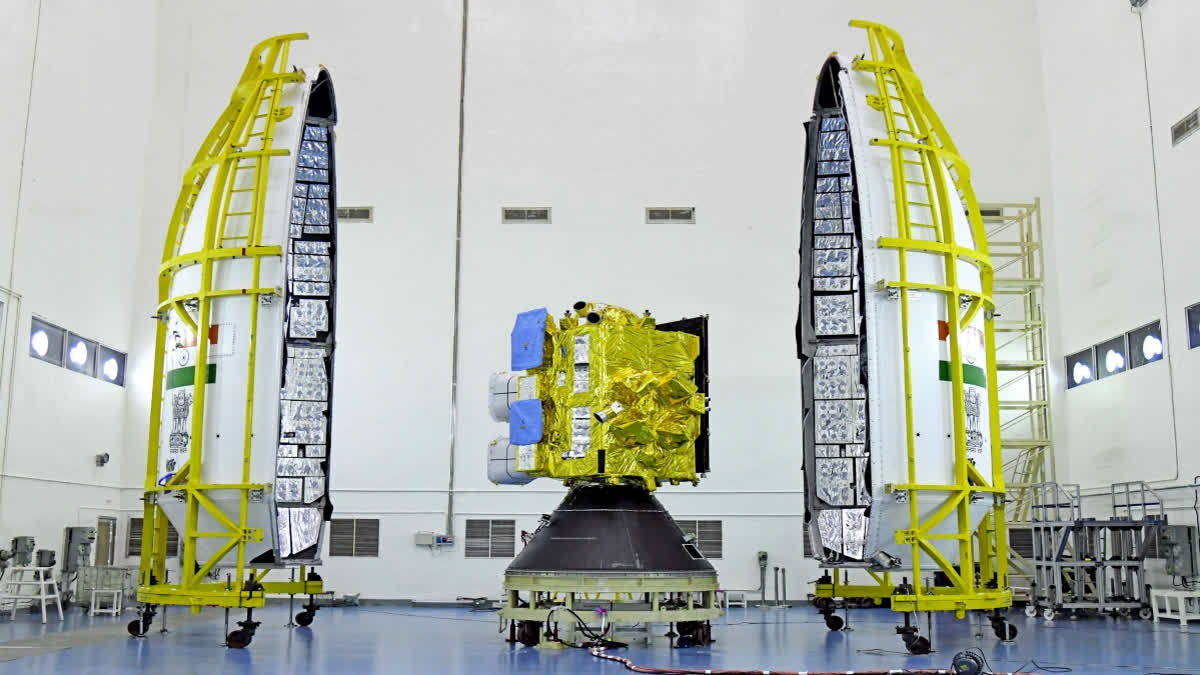Bengaluru:The Indian Space Research Organisation(ISRO) on Thursday said that the launch of its meteorological satellite INSAT-3DS, which will enhance meteorological observations and help in better weather forecasting and disaster warning, is scheduled for February 17.
In its 16th mission, the Geosynchronous Satellite Launch Vehicle F14(GSLV F14) aims at deploying the INSAT-3DS meteorological satellite into the Geosynchronous Transfer Orbit (GTO). Subsequent orbit-raising manoeuvres will ensure that the satellite is positioned in a Geo-stationary Orbit.
According to ISRO, The INSAT-3DS satellite is a follow-on mission of a third generation meteorological satellite to be placed in geostationary orbit, and it is fully funded by the Ministry of Earth Sciences (MoES).
"The launch of the GSLV-F14/INSAT-3DS mission is set for Saturday, February 17, at 5:30pm from the Satish Dhawan Space Centre (SDSC) SHAR at Sriharikota," ISRO said.
The satellite is designed to make enhanced meteorological observations and monitor land and ocean surfaces for weather forecasting and disaster warning, ISRO said. The satellite will augment meteorological services along with the presently operational INSAT-3D and INSAT-3DR satellites, the space agency added, stating that Indian industries have significantly contributed to the making of the satellite.
The primary objectives of the mission are:
- To monitor Earth’s surface, carry out Oceanic observations and its environment in various spectral channels of meteorological importance.
- To provide the vertical profile of various meteorological parameters of the Atmosphere.
- To provide the Data Collection and Data Dissemination capabilities from the Data Collection Platforms (DCPs).
- To provide Satellite Aided Search and Rescue services.
These will be achieved through the satellite's payloads such as six channel imager, 19 channel sounder, Data Relay Transponder (DRT), and Satellite Aided Search & Rescue transponder (SAS&R).
Many departments of the MoES such as the India Meteorology Department (IMD), National Centre for Medium-Range Weather Forecasting (NCMRWF), Indian Institute of Tropical Meteorology (IITM), National Institute of Ocean Technology (NIOT), and Indian National Center for Ocean Information Services (INCOIS) and other agencies and institutes will be using the INSAT-3DS satellite data to provide improved weather forecasts and meteorological services.
ISRO informed that the GSLV is a three-stage, 51.7 m long vehicle with a liftoff mass of 420 tonnes. The first stage (GS1) comprises a solid propellant (S139) motor containing 139 tons of propellant and four earth-storable propellant stage (L40) strap-ons which carry 40 tons of liquid propellant in each.
The second stage (GS2) is also an earth-storable propellant stage loaded with 40-ton propellant. The third stage (GS3) is a cryogenic stage with a 15-ton propellant loading of liquid oxygen (LOX) and liquid hydrogen (LH2). During the atmospheric regime, the satellite is protected by Ogive payload fairing, ISRO said.
Read More
- ISRO's POEM-3 Mission Achieves All its Payload Objectives
- From Chandrayaan-3 to Aditya L1, ISRO Showcases Major Feats in Republic Day Tableau
- NASA spacecraft 'pings' India's Chandrayaan-3 lander on Moon
